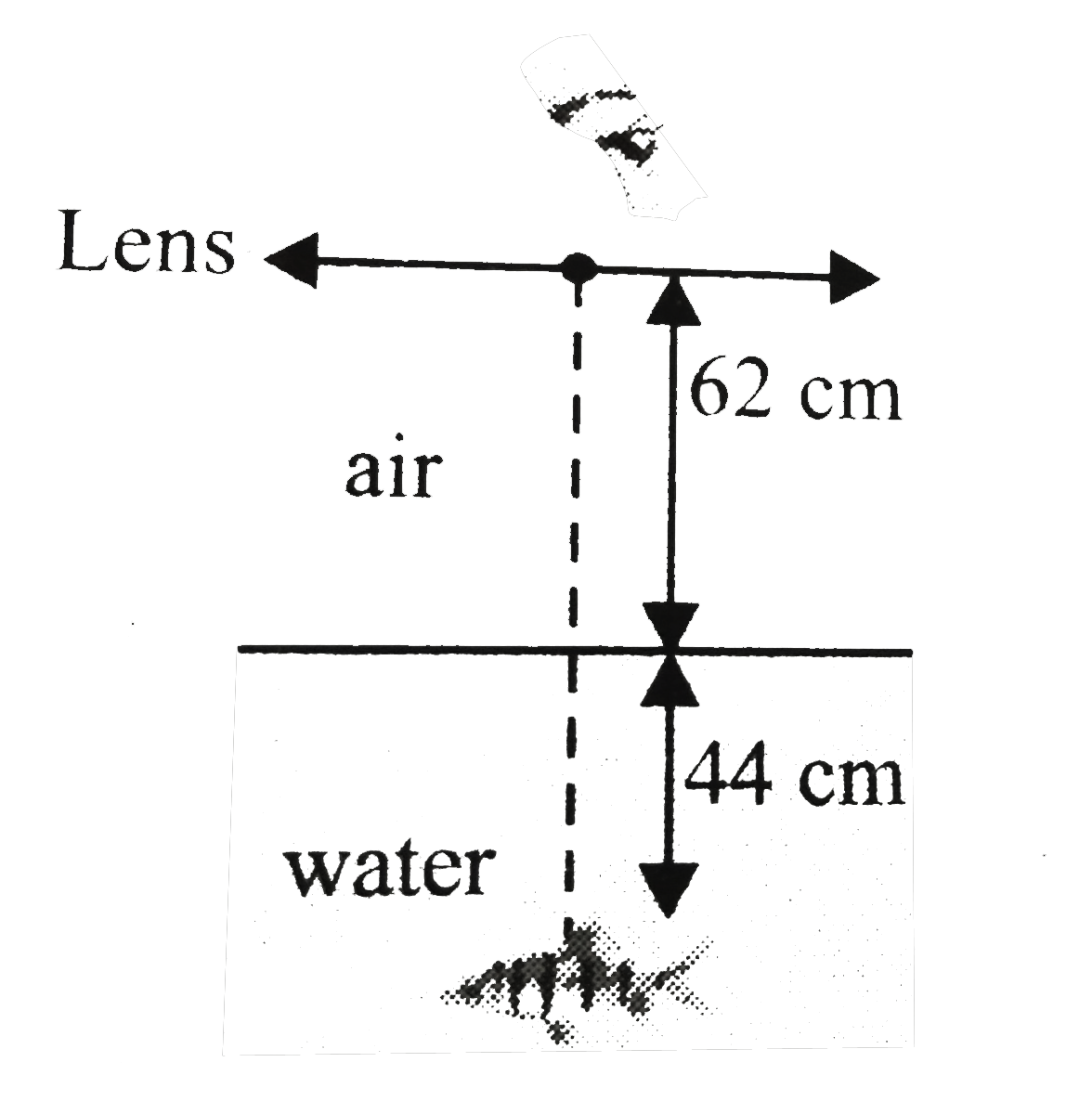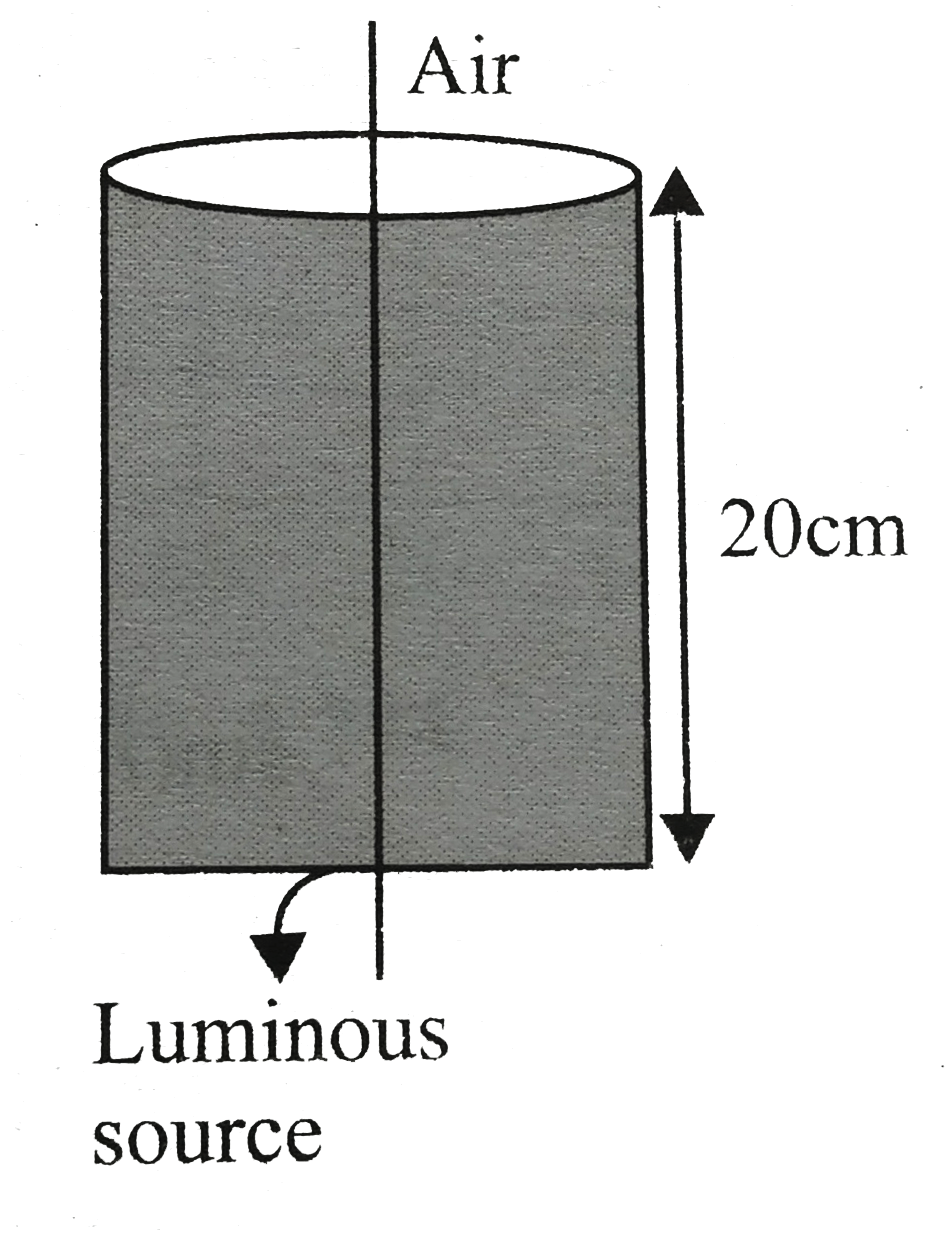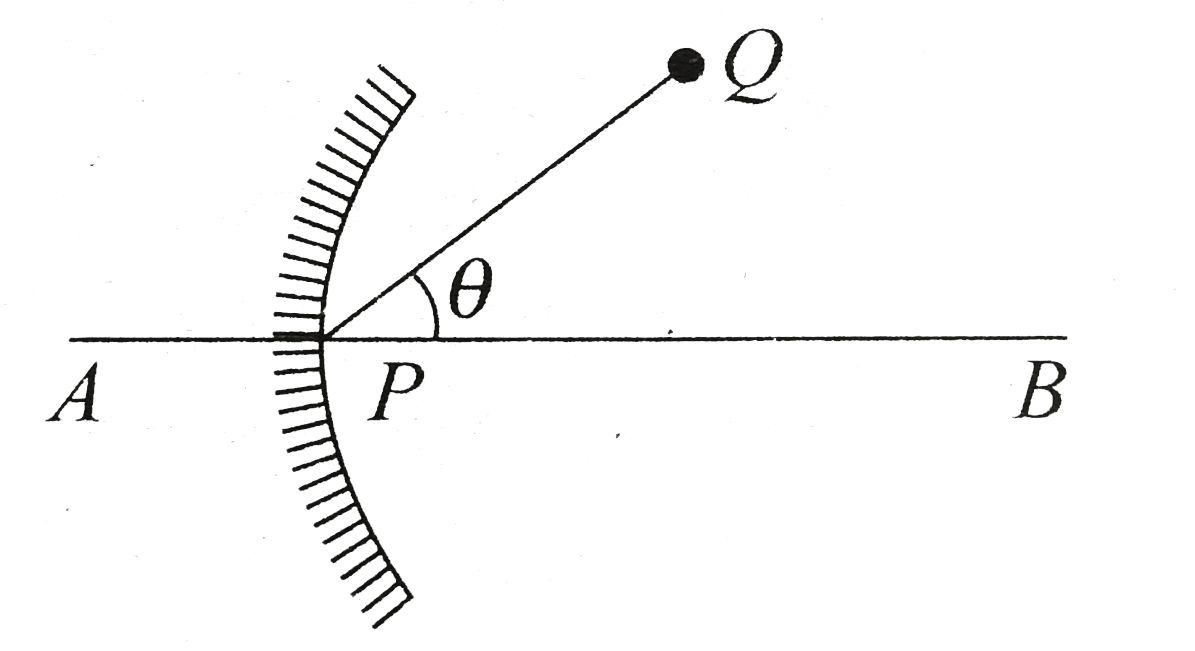Subjective from CENGAGE PHYSICS Chapter 24 GEOMETRICAL OPTICS for Class 12
| Class 12 | PHYSICS |
| Chapter | GEOMETRICAL OPTICS |
| CENGAGE PHYSICS | Subjective |
| Medium | English |
| Academic Year | 2023-2024 |
Question 2
There is a spherical glass shell of refractive index 1.5, inner radius 10 cm and outer radius 20 cm. Inside th espherical cavity, there is air. A point object is placed at a point O at a distance of 30cm from the outer spherical surface. Find the final position of th eimage as seen eye.
 View Solution
View SolutionQuestion 3
A direct-vision prism is made out of three prisms, each with a refracting angle of ϕ=60∘ , attached to each other as shown in Figure. Light of a certain wavelength is incident on the first prism. The angle of incidence is 30∘ and the ray leaves the third prism parallel to the direction of incidence. The refractive index of the glass of the first and third prisms, is 1.5. Find the refractive index of the material of the middle prism. (√6=2.45)
 View Solution
View SolutionQuestion 5
The internal surface of the walls of a sphere is specular. The radius of the sphere is R=36cm. A point source S is placed at a distance R/2 from the cneter of the sphere and sends light to the remote part of the sphere. Where will the image of the source be after two successive reflections from the remote and then nearest wall of the sphere? How will the position of the image change if the source sends light to the nearest wall first?Consider paraxial rays. View SolutionQuestion 6
As shown in Figure,. And object O is at the position (-10,2) with respect to the origin P. The concave mirror M1 has radius of curvature 30cm. A plane mirror M2 is kept at a distance of 40cm in front of the concave mirror. Considering first refletion on the concave mirror M1 and second on the plane mirror M2. Find the coordinates of the second image w.r.t. the origin P.
 View Solution
View SolutionQuestion 9
O is a point object kept on the principal axis of a concave mirror M of radius of curvature 20cm. P is a prism of angle 1.8∘ . Light falling on the prism (at small angle of incidence) gets refracted through the prism and then falls on the mirror. Refractive index of the prism is 3/2 . Find the distance between the images formed by the concave mirror due to this light.
 View Solution
View SolutionQuestion 10
In Figure ., L is a converging lens of focal length 10cm and M Iis a concave mirror of radius of curvature 20cm. A point object O is placed in front of the lens at a distance of 15cm. Ab and CD are optical axes of the lens and mirror, respectively. Find the distance of the final image formed by this system from the optical center of the lens. The distance between CD and AB is 1cm. View Solution
View SolutionQuestion 11
A stationary observer O looking at a fish F in water (μw=4/3) through a converging lens of focal length 90.0cm . The lens is allowed to fall frelly from a height 62.0cm with its axis vertical. The fish and the observer are on the principal axis of the lens. The fish moves up with constant velocity 100cm/s. Initially it was at depth of 44.0cm . Find the velocity (in cm//s) with which the fish appears to move with respect to lens to the observer at t=0.2s. (take g=10m/s2)
 View Solution
View SolutionQuestion 12
The back wall of an aqaurium is a mirror that is 30 cm away from the fron wall. The sides to the tank are negligibly thin. A fish is swimming midway between the front and back walls.
a. An image of the fish appears behind the mirror. How far dows this image appear to be from the front wall of the aquarium?
b. Would the refractive index of the liquid have to be larger or smaller in order for the image of the fish to appear in front of the mirror, rather than behind it? Find the limiting value of this refractive index. Initially, water is there in aquarium having refractive index 4/3 View SolutionQuestion 13
An object is placed 20cm to the left of a converging lens having focal length 16cm. A second, identical lens is placed to the right of the first lens, such that the image formed by the combination is of the same size and orientation as the object is. Find the separation between the lenses. View SolutionQuestion 15
A parallel beam of light falls on the surface of a convex lens whose radius of curvature of both sides of 20cm. The refractive index of the material of the lens varies as μ=1.5+0.5r , where r is the distance of the point on the aperture from the optical centre in cm. Find the length of the region on the axis of the lens where the light will appear. The radius of aperture of the lens is 1cm. View SolutionQuestion 16
A thin biconvex lens of refractive index 3/2 and radius of curvature 50cm is placed on a reflecting convex surface of radius of curvature 100cm. A point object is placed on the principal axis of the system such that its final image coincides with itself. Now, few drops of a transparent liquid is placed between the mirror and lens such that final image of the object is at infinity. Find refractive index of the liquid used. Also, find the position of the object. View SolutionQuestion 17
A convex lens of focal length f1 is placed in front of a luminous point object. The separation between the object and the lens is 3f1 . A glass slab of thikness t is placed between the object and the lens. A real image of the object is formed at the shortest possible distance from the object.
a. Find the refractive index of the slab.
b. If a concave lens of very large focal length f2 is placed in contact with the convex lens, find the shifting of the image. View SolutionQuestion 18
A lens is made of three thin different mediums. Radius of curvature and refractive index of each medium is shown iin Figure., Surface AB is straight. An object is placed at some distance from the lens by which a real image is formed on the screen placed at a distance of 10cm from the lens. Find

a. The distance of the object from the lens.
b. A slab of thiskness 1.5cm and refractive index 1.5 is introduced between the image and the lens. Find the new position of the object so that image is again formed on the screen.
c. Find the position of the image when same slabe is placed on the other side of the lens {as in part (b)}View SolutionQuestion 19
An equiconvex lens, f1=10cm, is placed 40 cm in front of a concave mirror, f2=7.50cm as shown in Figure ., An object 2 cm high is placed 20cm to the left of the lens . Find the position of the final image is formed when leftward travelling rays once again pass through the lens. Find overall magnification.
 View Solution
View SolutionQuestion 20
A biconvex lens, f1=20cm , is placed 5cm in front of a convex mirror, f2=15cm. An object of length 2 cm is placed at a distance 10cm from the lens.
Find the loaction and nature of the final image after the leftward travelling rays once again pass through the lens. Find overall magnification.
 View Solution
View SolutionQuestion 22
A stationary observer O looking at a fish F in water (μw=4/3) through a converging lens of focal length 90.0cm . The lens is allowed to fall frelly from a height 62.0cm with its axis vertical. The fish and the observer are on the principal axis of the lens. The fish moves up with constant velocity 100cm/s. Initially it was at depth of 44.0cm . Find the velocity (in cm//s) with which the fish appears to move with respect to lens to the observer at t=0.2s. (take g=10m/s2)
 View Solution
View SolutionQuestion 23
The bottom of glass beaker is made of a thin equiconvex lens having bottom side silver polished as shown in figure,. Now the water is filled in the baker upto a height of h=4m. The image of point object floating at middle point of beaker at the surface of water coincides with it. Find out the value of radius (in m) of curvature of lens. (.aμg=3/2,.aμw=4/3)
 View Solution
View SolutionQuestion 24
A thin convex lens of refractive index μ=1.5 is placed between a point source of Light S and a screen A, shown in figure,. Light rays from the source S are brought to focus on the screen A, forming a point image P. The distance SP is equal to 50cm. Water (μ=4/3) is now poured into a vessel interposed between the object and the lens, and it is observed that when the water level is 8cm the screen has to be moved up by a distance of 6cm in order to get a sharp image. Find the focal length of the lens.
 View Solution
View SolutionQuestion 25
A thin equiconvex glass lens (μg=1.5) is beign placed on the top of a vessel of height h=20cm as shown figure. A luminous point source is beign placed at the bottom of vessel on the principal axis of the lens. When the air is on both the side of the lens the image of luminous source is formed at a distance of 20cm from the lens out side the vessel. When the air inside the vessel is being replaced by a liquid of refractive index μl the image of the same source is being formed at a distance 30cm from the lens outside the vessel. Find the μl.
 View Solution
View SolutionQuestion 26
A point object is located at a distance of 100cm from a screen. A lens of focal length 23 cm mounted on a movable frictionless stad is kept between the source and the screen. The stand is attached to a spring of natureal length 50cm and spring constant 800N/m as shown in Figure . Mass of the stand with lens is 2 kg. How much impulse P should be imparted to the stand so that a real image of the object is formed on the screen after a fixed time gap? Also find this time gap. (Neglect width width of the stand)
 View Solution
View Solution




